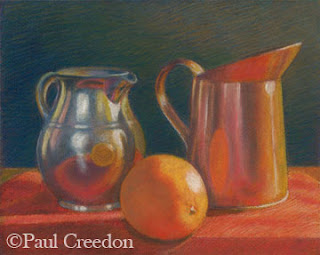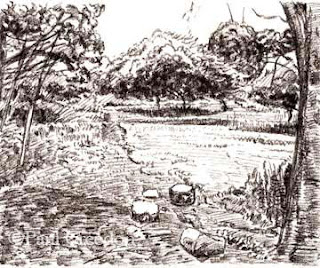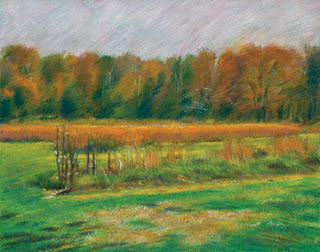In 2010 I started a freelance graphic and web design
business called Pat Creedon Design, Inc. I came up with the name (mine) and had
it incorporated. The plan was to market my extensive abilities at branding and
creative concepts to help small businesses grow. I got quite a few clients once
word got around. I designed a menu, several business cards, several websites,
postcards, PowerPoint templates, Social Media graphics, and logos. I also
signed up with a few creative staffing agencies that placed me at area
corporations for onsite stints. And I worked freelance for my previous
employer. I even did some work for non-profits. Overall it was a sucessful
company and still is nice to have as a sideline and back up to the fulltime
employment I was offered in May 2012.
So why did I change my business model to focus more on Paul
Creedon, Fine Artist? First and foremost, he’s my husband! But beyond that I am
a great fan of his work. I always have been. But his recent work in pastels is
really fulfilling his potential in my opinion. I want everyone to see it. To
see it is to love it. Though many art collectors are drawn to a more abstract
style and Paul may never achieve trendiness, he produces consistent,
high-quality art for the lover of colorful, recognizeable still lifes and
landscapes. If you fit that bill then welcome. Paul has a wonderful personality
that really comes through in his blog and his art. Get to know him here and on
Twitter, @pecreedon. I will be designing his branding and promoting his art to
galleries and by entering local art shows. So look for his work on a wall near
you or better yet, purchase a Paul Creedon for your own wall! To do so, simply
email me, Patricia Creedon. Samples and pricing will be
sent away!














